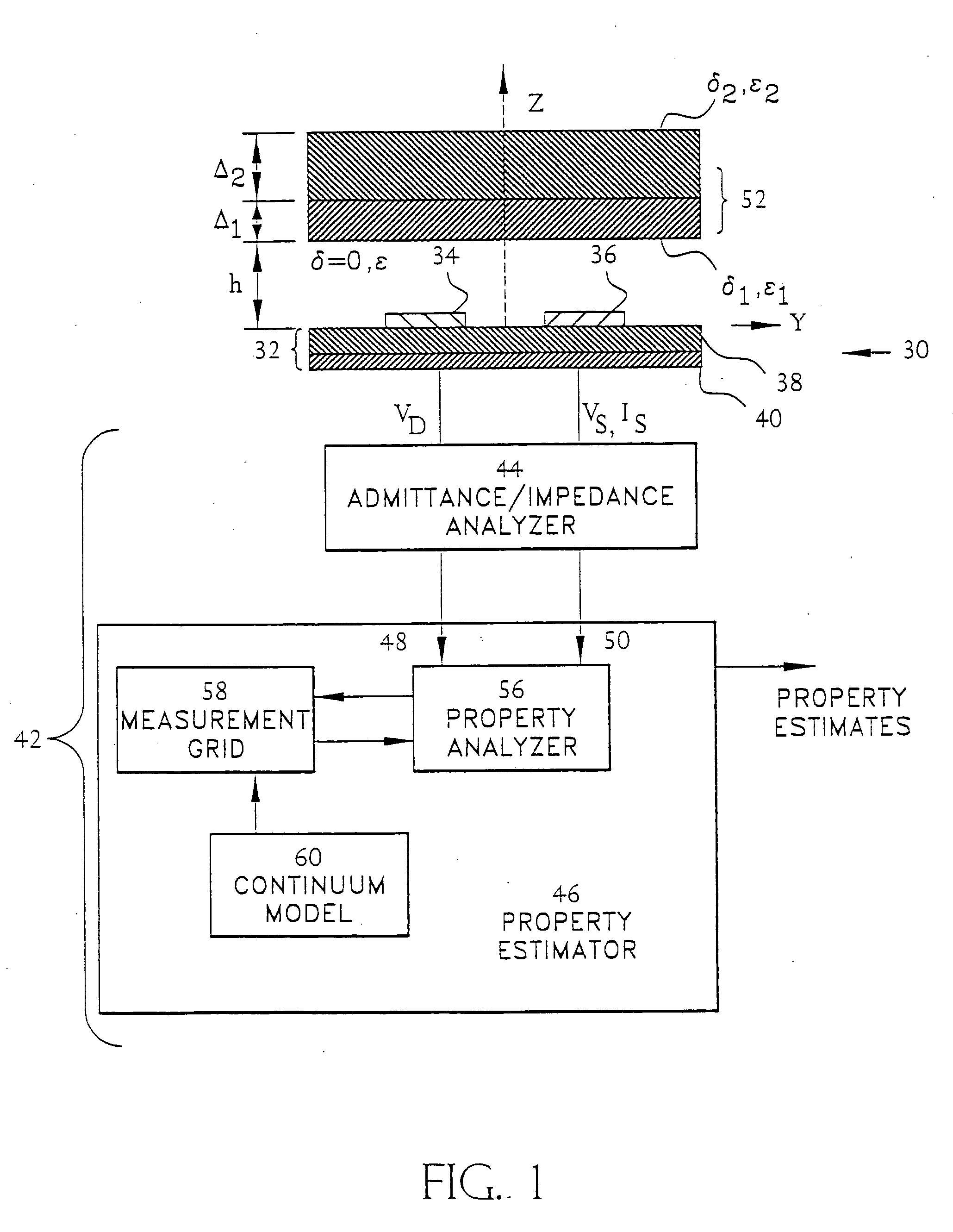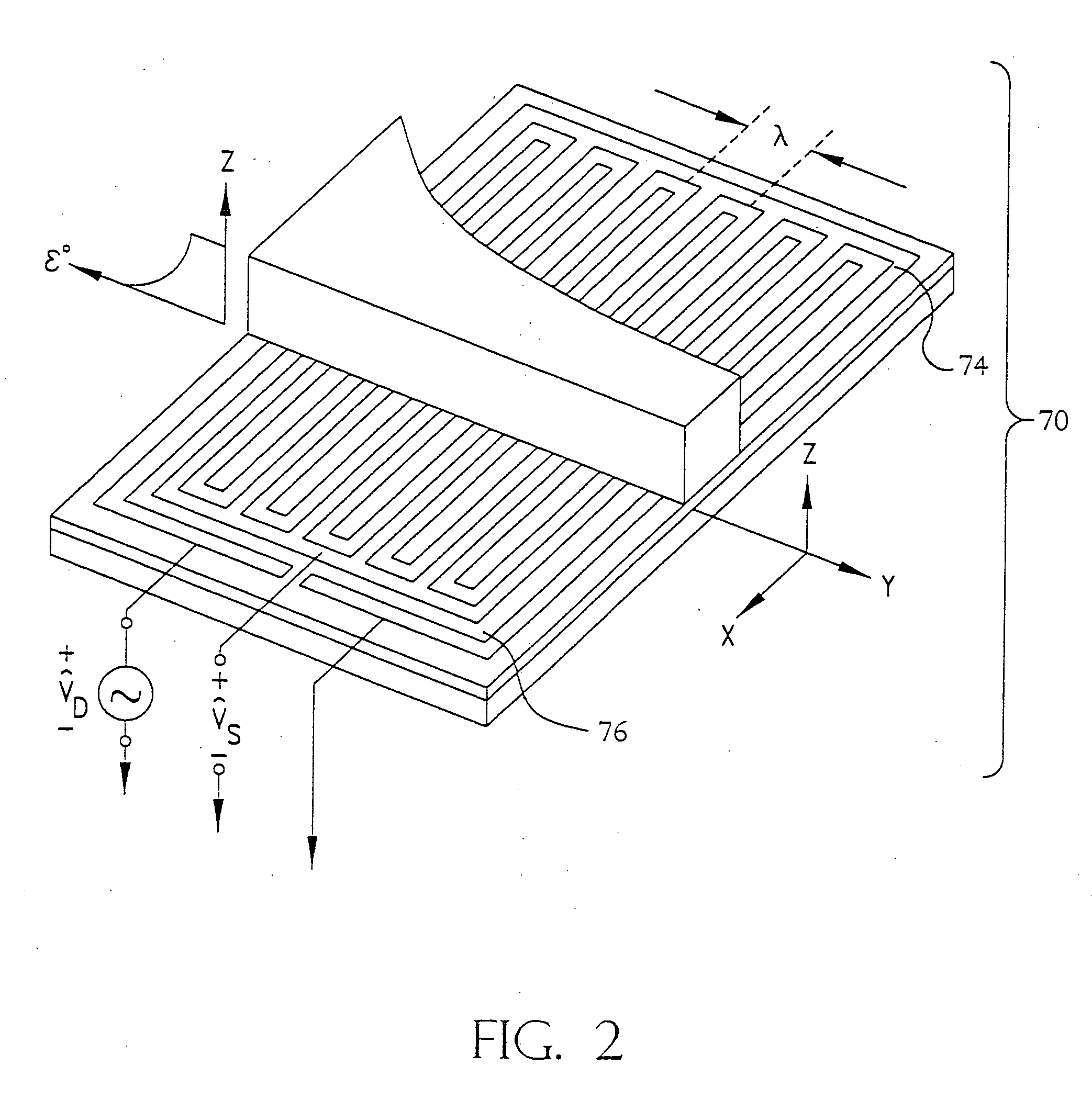Methods for processing, optimization, calibration and display of measured dielectrometry signals using property estimation grids
- Summary
- Abstract
- Description
- Claims
- Application Information
AI Technical Summary
Benefits of technology
Problems solved by technology
Method used
Image
Examples
Embodiment Construction
[0040] Methods, techniques, and devices are disclosed for measurements of electrical, physical, and dimensional properties of a material under test as well as geometric and kinematic properties of the measurement arrangement. These measurements are made with both contact and non-contact of the material under test by a sensor. For contact measurements, the sensor may be embedded in material under test (MUT).
[0041] A measurement apparatus 30 is illustrated in FIG. 1. The measurement apparatus 30 includes an electromagnetic element 32 comprised of voltage driven electrode 34, voltage or current sensing electrode 36, a dielectric substrate 38 that is preferably highly electrically insulating, and a highly conducting back plane 40.
[0042] The driven electrode 34 has an imposed electrical excitation, typically either a voltage or current that can be either periodically varying in time such as sinusoidally or square wave varying with time at frequency f measured in Hertz for frequency dom...
PUM
 Login to View More
Login to View More Abstract
Description
Claims
Application Information
 Login to View More
Login to View More - R&D
- Intellectual Property
- Life Sciences
- Materials
- Tech Scout
- Unparalleled Data Quality
- Higher Quality Content
- 60% Fewer Hallucinations
Browse by: Latest US Patents, China's latest patents, Technical Efficacy Thesaurus, Application Domain, Technology Topic, Popular Technical Reports.
© 2025 PatSnap. All rights reserved.Legal|Privacy policy|Modern Slavery Act Transparency Statement|Sitemap|About US| Contact US: help@patsnap.com



